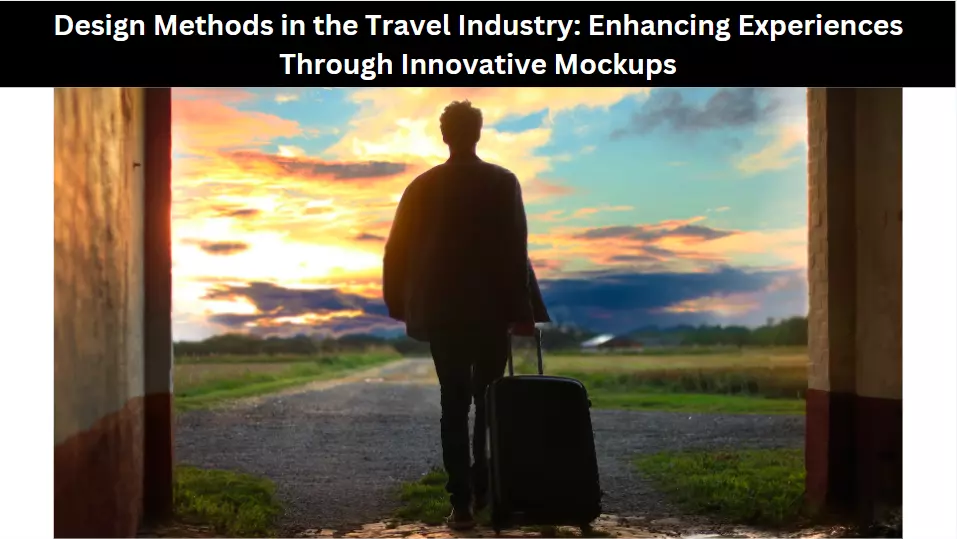In the dynamic and competitive world of travel, designing exceptional experiences for customers is of utmost importance. The travel industry heavily relies on effective design methods to captivate and engage travellers, providing them with memorable and seamless journeys. One crucial aspect of this design process is the use of mockups.
Mockups serve as powerful tools for visualising and refining concepts, enabling travel companies to create intuitive interfaces, appealing websites, and captivating marketing materials. In this article, we will explore the design methods employed in the travel industry, with a specific focus on the utilisation of mockups to enhance user experiences.
Understanding User-Centred Design
It is an iterative practice in which user needs, data, and feedback are continuously incorporated into the product development process. The goal of UCD is to tailor your product to real user needs. It’s easy to get caught up in the company’s long-term plan or vision and lose sight of who is really going to judge your product: users.
Mockups play a vital role in this process, allowing designers to visualise their ideas and iterate based on user feedback. With mockups, designers can accurately represent the user interface (UI) and user experience (UX), ensuring that every aspect is optimised to satisfy travellers.
Wireframes: Conceptualizing Design Ideas
Wireframes are usually used as project documentation. Because they are a static and fixed way of displaying an interface, they need to be described appropriately (from a brief explanation, to complex technical documentation, if necessary).
In the tourism industry, wireframes are needed early in the design process. Designers use wireframes to outline the flow of information, arrange content elements, and create intuitive navigation systems. Using wireframe mockups, travel companies can effectively communicate their design concepts to stakeholders, collect feedback, and make informed decisions before moving on to more detailed design steps.
However, they can be used for a less formal purpose. Since they are convenient and easy to use, they are useful as quick doodles for internal team communication. If developers ask how something should be done, the answer can be thought of as a quick wireframe.
High Fidelity Mockups: Bringing Design To Life
Mockups bridge the gap between the wireframes and the final design with high fidelity. Such a poster mockup showcases the visual aspects of the user interface with realistic colour schemes, typography, and images. In the travel industry, high fidelity mockups enable designers to create visually stunning websites, mobile apps and other digital platforms. By accurately representing the end product, high-quality mockups help stakeholders visualise the end result, provide feedback, and make necessary adjustments before development.
Interactive Prototypes: Simulating User Experiences
Interactive prototypes take mockups to the next level by simulating the user experience and adding functionality. By incorporating clickable elements, animations, and transitions, designers can create interactive prototypes that closely resemble the final product. In the travel industry, interactive prototypes enable companies to test the usability of their designs, identify potential pain points, and refine the user experience. Travellers can interact with these prototypes, providing valuable feedback that helps enhance the overall product before it is developed and launched.
Responsive Design: Adaptation To Various Devices
In today’s mobile-dominated environment, responsive design is critical in the travel industry. Layouts help designers create responsive interfaces that easily adapt to different screen sizes and devices.

This is a way to correctly display the site interface on any device. The designer draws individual web page layouts for smartphones, tablets, and computers. The developer sets the appropriate size and screen resolution for each layout. When the user enters the site, the system recognizes the type of device and shows the appropriate type of interface.
A/B Testing: Iterate for Best Results
It is an integral part of the product development process. This is an experiment that compares two versions of something to test hypotheses and determine which version is better.
Mockups play an important role in A/B testing because they allow designers to create and test multiple designs at the same time. By analysing user behaviour and feedback, travel companies can optimise their design, leading to higher user engagement and higher conversions.
Collaborative Design: Facilitating Teamwork
Mockups serve as a valuable collaboration tool in the travel industry, bringing together designers, developers, marketers, and stakeholders. By visualising design and interaction concepts, mockups enable effective communication and collaboration between team members. Designers can share mockups with the team, collect feedback, and iterate designs based on the data they receive. This collaborative approach ensures that all points of view are taken into account, resulting in projects that meet the goals and expectations of the travel company and its clients.
Conclusion
Design methods and layouts play a critical role in creating an exceptional user experience in the travel industry. These tools allow travel companies to visualise, refine and iterate their design concepts. Layouts facilitate user-centric approaches to design. They also promote collaboration and teamwork between project teams and stakeholders. By leveraging the power of design techniques and layouts, the travel industry can continue to innovate and provide travellers with unforgettable and delightful experiences during their travels.
